Menu
Work
About
Contact
Publications
VR Body Calligraphy - Whole-body Performance Writing for Chinese Calligraphy
VR Calligraphy: Transposing Chinese calligraphy as choreographed movements into whole-body performances in VR
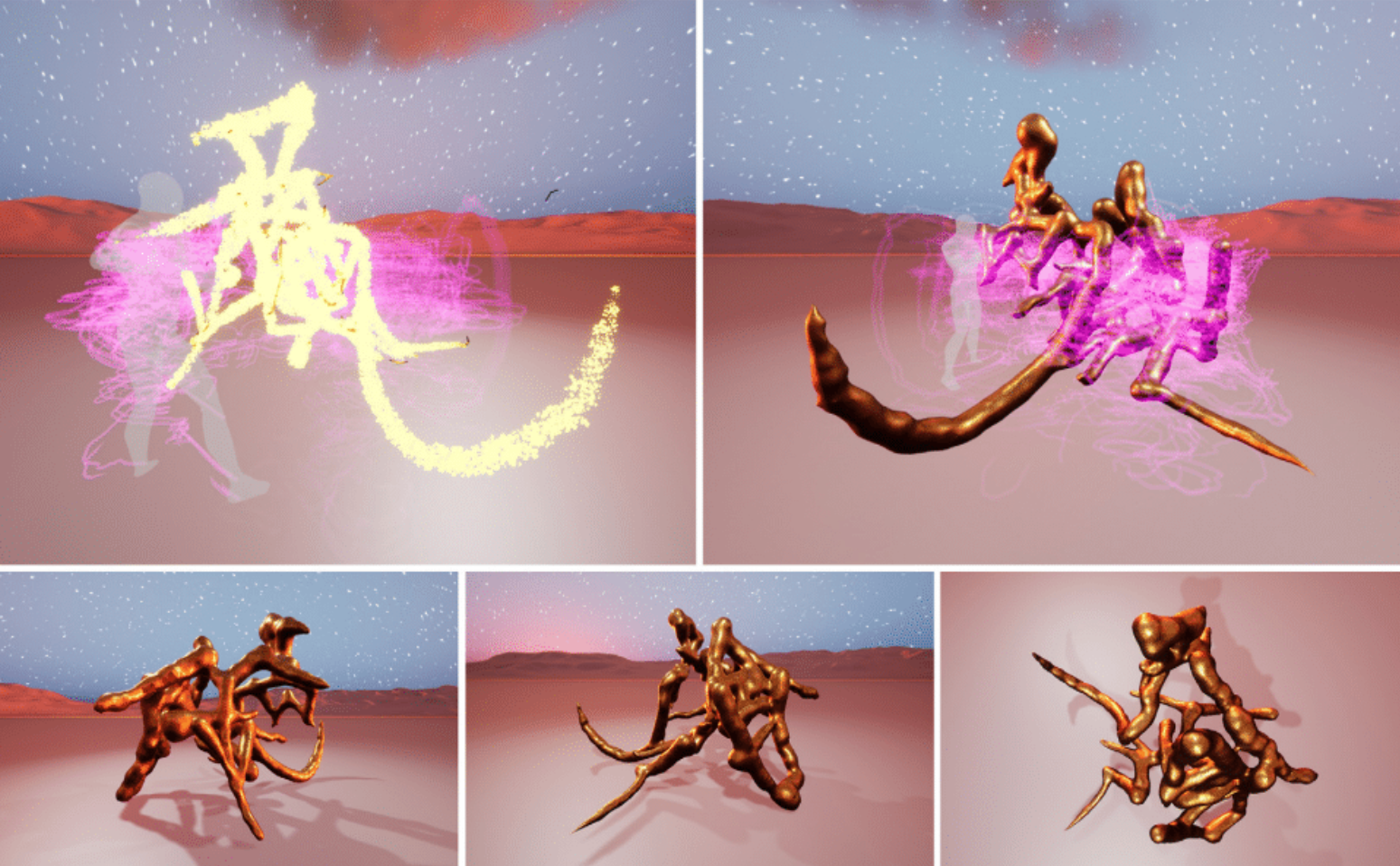
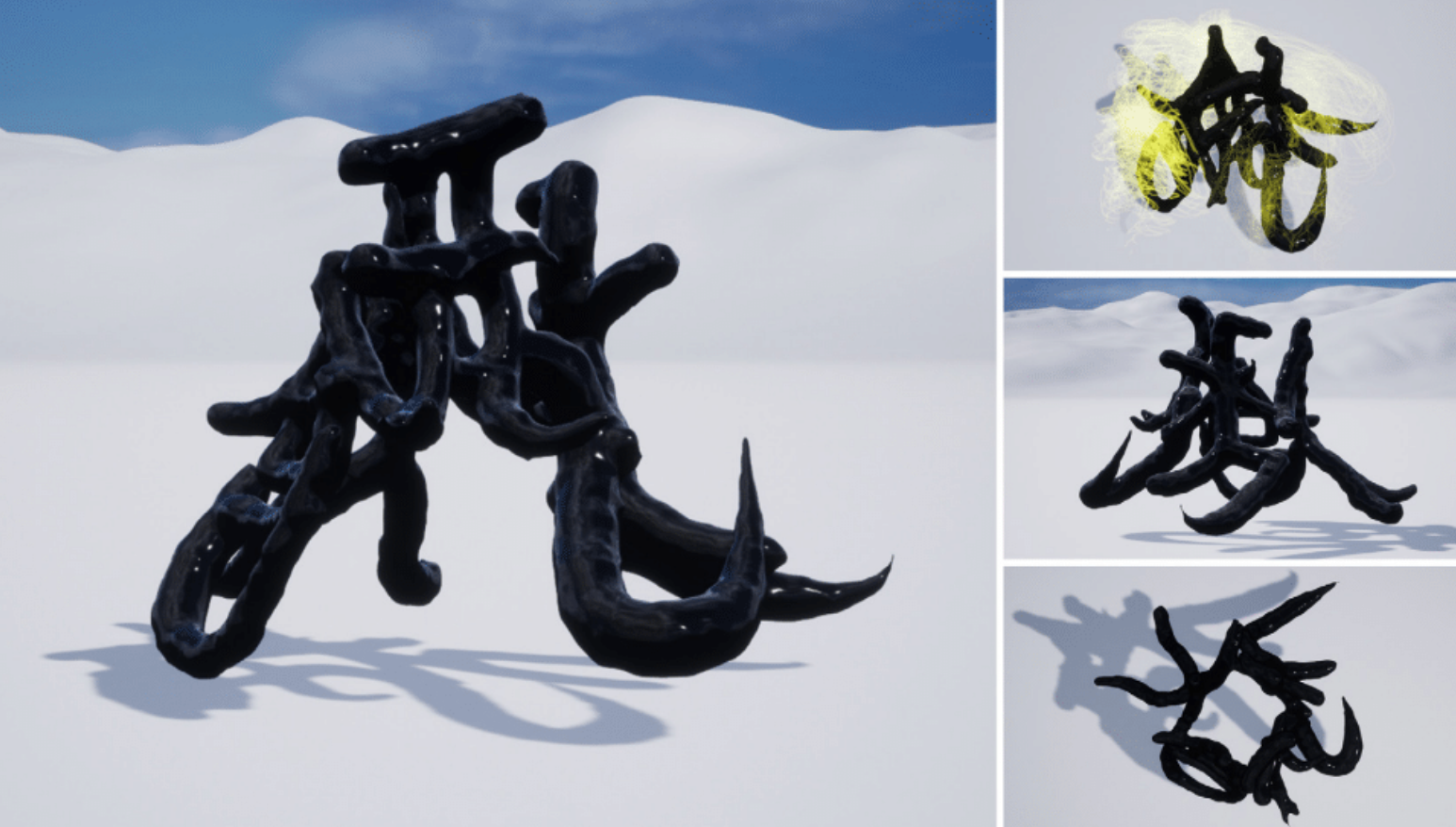
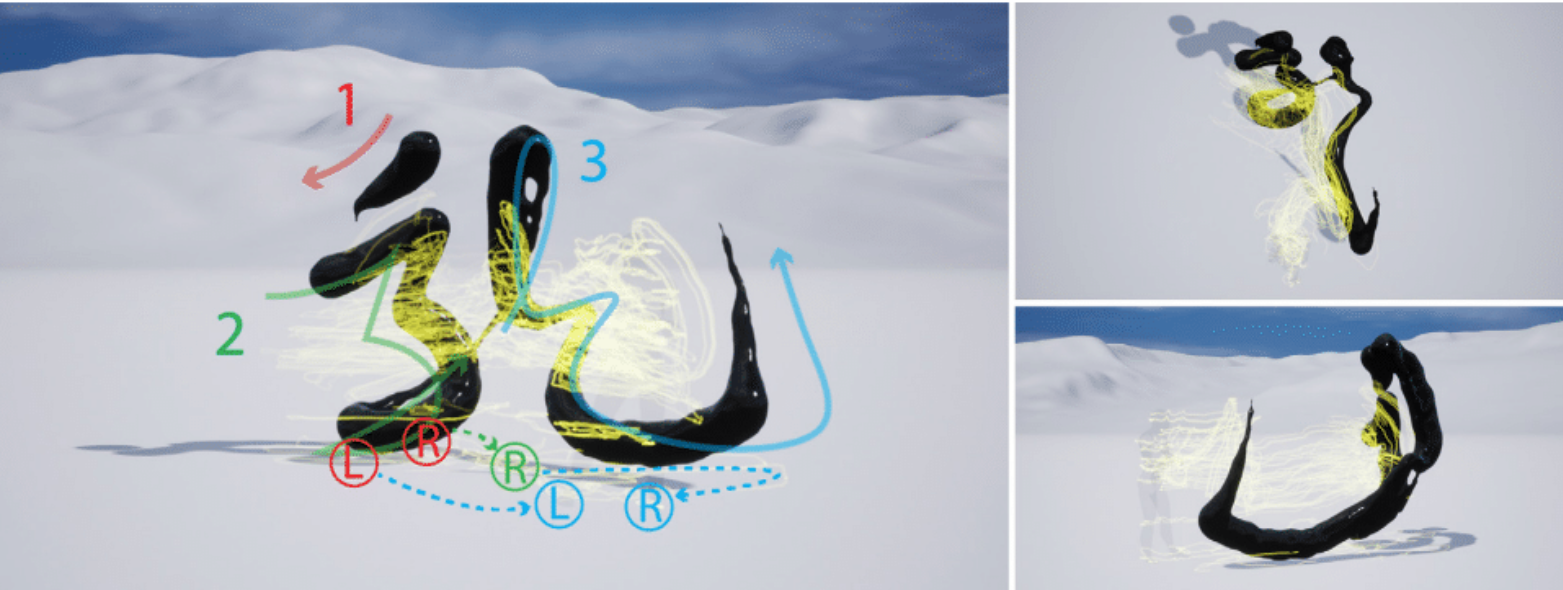
We aim to transfer its qualities to an immaterial and dynamically time-based version in VR" [Shum and Klein 2023]. Previously [ibid], we have started unravelling the philosophical aspects of the research, and written in depth about the aesthetic considerations of transforming two-dimensional calligraphy into three-dimensional forms.
Publications
VR Body Calligraphy - Whole-body Performance Writing for Chinese Calligraphy
VR Calligraphy: Transposing Chinese calligraphy as choreographed movements into whole-body performances in VR



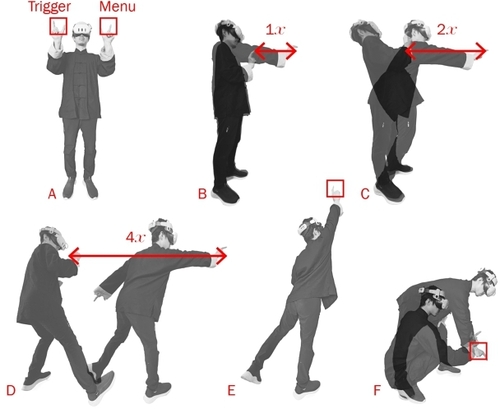
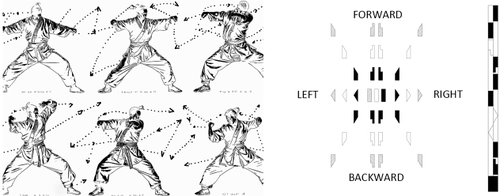
We aim to transfer its qualities to an immaterial and dynamically time-based version in VR" [Shum and Klein 2023]. Previously [ibid], we have started unravelling the philosophical aspects of the research, and written in depth about the aesthetic considerations of transforming two-dimensional calligraphy into three-dimensional forms.
Menu
Work
About
Contact
Traditional Chinese Calligraphy, Shufa书法, articulates the physical writing of ink on paper using brushes. It is a deeply material-based practice that also transcends beyond art, to a core philosophy of Chinese culture, recognized by UNESCO (2009). It is a tangible practice with an intangible cultural heritage - a lineage spanning millennia. Our research aims to extend this practice further, from a material-based art into a digital form of media dissemination. Retaining the core values of Shufa书法, these are referred to as geist (spirit) in the West and represented by yi(意, intent) in Chinese [Shi 2019]. Instead of using ink and brush, the physical tools articulating a two-dimensional practice, we investigate how three-dimensional calligraphy can be written in VR space.
#VR
2024
Publications
VR Body Calligraphy - Whole-body Performance Writing for Chinese Calligraphy
VR Calligraphy: Transposing Chinese calligraphy as choreographed movements into whole-body performances in VR


We aim to transfer its qualities to an immaterial and dynamically time-based version in VR" [Shum and Klein 2023]. Previously [ibid], we have started unravelling the philosophical aspects of the research, and written in depth about the aesthetic considerations of transforming two-dimensional calligraphy into three-dimensional forms.


